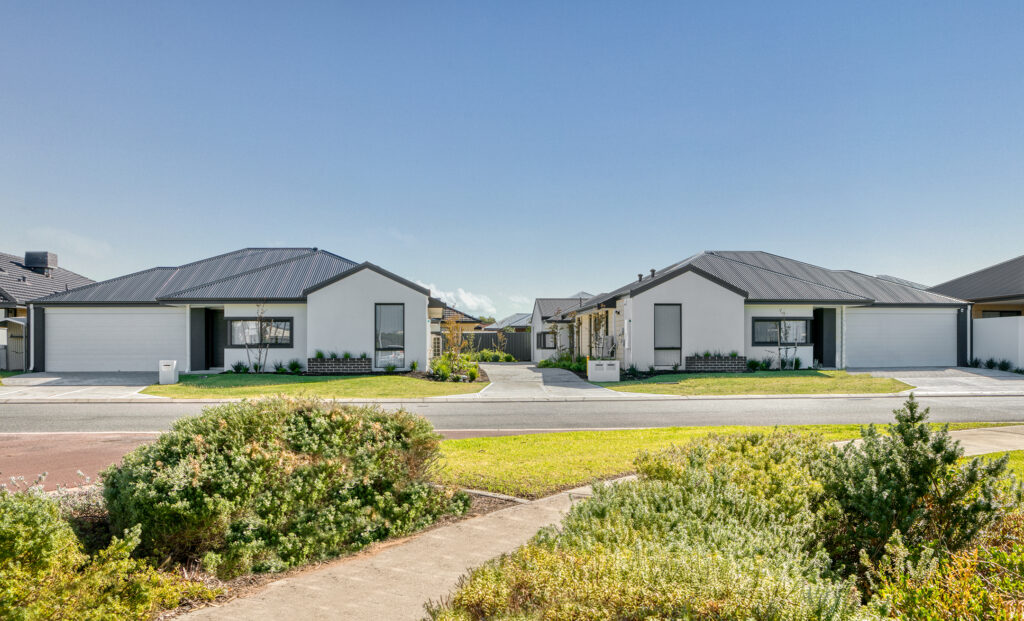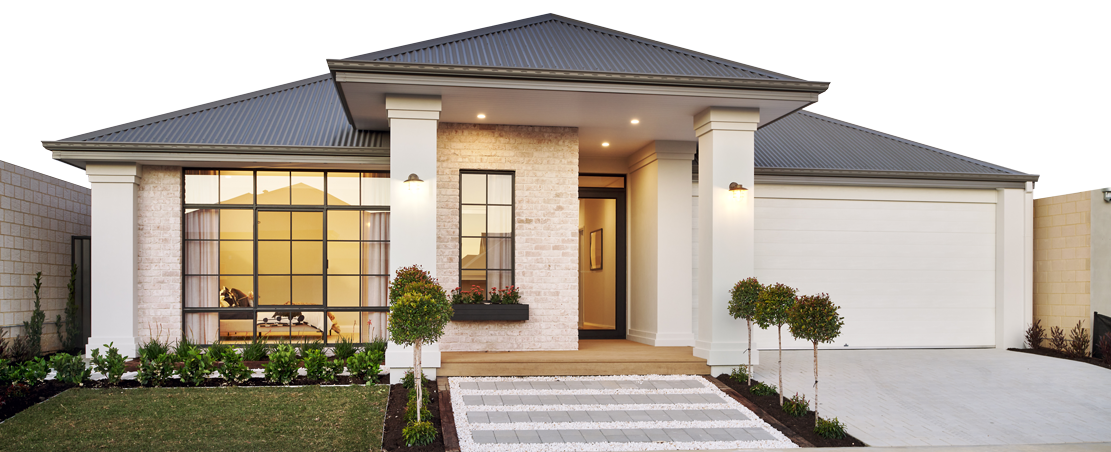After three years of record growth, Perth remains the most affordable capital city in Australia to buy property in.
Planning a subdivision project? Subdividing land is a popular avenue for land development in Western Australia, but it can be complicated without the right tools and experience. Before you seek sub-division approval, it helps to first understand the process of subdividing land in WA. This means understanding the tax implications of selling subdivided land, the different subdivision conditions set by your local government and of course accounting for the costs of the entire process. That’s what we’ll cover below!
Before we begin, it’s always worth noting that while you’ll find a lot of what you need to know online, there is no substitute for talking to a professional who can guide you through the process. At Summit Developments, we have helped numerous WA families and individuals to become successful property developer. Reach out to our experienced developments team for a free, no obligations consultation!
Page Contents
- What is a Subdivision?
- The Subdivision Process
- Is Subdivision Right for You?
- Is Your Block Suitable for a Strata or green title Subdivision?
- Understanding Zoning and R-Codes
- Common R-Codes in WA
- Minimum Land Size for Subdivision in WA
- R-20 Zoning
- R-30 Zoning
- R-40 Zoning
- Finding Out Your Land’s Zoning
- Different Ways to Subdivide Your Land
- The cost of subdividing
- Next steps
- Valuable resources
What exactly is subdivision?
If the term ‘subdivision’ is new to you, simply put, subdivision allows the creation of separate land titles from a property, that originally accommodated a single residence, to enable the potential for multiple properties on that block.
The Subdivision Process in Western Australia
The act of subdividing land can be incredibly profitable and all up may take less than a year! Without any construction of dwellings included you can expect around 8-9 months to subdivide your property in WA. If you wish to include construction, you are looking at a timeline of up to 2+ years in total to complete the project. However, with Summit Developments, we can structure the development to reduce this time frame by more than 6 months.
In Western Australia, several key players and processes come into the picture most of which can be boiled down to the following 6 steps.
1. Initial Consultation and Research (Duration: 1-3 months)
- Familiarise yourself with the West Australian Planning Commission’s (WAPC) guidelines and requirements. The West Australian Planning Commission (WAPC) is the primary statutory body for subdividing in WA. They are instrumental in overseeing and approving subdivision developments in the state. Before subdividing a piece of land, a subdivision application must be submitted to the WAPC for preliminary review and approval. It ensures that the proposal adheres to the guidelines and standards set for land development.
- Engage a sub-division consultant or town planner for expert advice on local regulations and best practices.
2. Application Submission: (Duration: Up to 3 months)
- Prepare and submit an application to the WAPC.
- Obtain conditional approval, noting any conditions or requirements set by the WAPC or local councils.
3. Site Planning and Demarcation (Duration: 3 – 5 months)
- Develop a detailed survey plan with a land surveyor, specifying dimensions and boundaries.
- Clearly demarcate (set) new lot boundaries for each subdivided plot.
4. Addressing Specific Conditions (Duration: 1 – 2 months)
- Ensure compliance with all stipulated conditions from the WAPC.
- Ensure street access for each plot, and consider the implications of retained dwellings.
5. Title Formalities (Duration: 2 – 4 months)
- Secure separate land titles for each subdivided plot, ensuring individual ownership rights.
- Obtain the new titles once all conditions and planning requirements have been met.
6. Construction Phase (Duration: 12 – 24 months)
- Begin dwelling construction, turning the plots into habitable spaces.
Is subdividing land the right development pathway for your property?
Before choosing to subdivide land, it’s vital to conduct feasibility studies and ask the pertinent questions. For example, is there a genuine demand in the local area for homes? What kind of housing resonates with the potential residents?
Subdividing where you presently reside could be a smart move if the existing house is located in an established area attractive to future homeowners. However, a subdivided block is not always going to be attractive in areas with an abundance of land available.
Summit Developments offers innovative designs tailored for backyard subdivisions, giving you the option to lease or live in the newly constructed home – this can be especially attractive if you are not interested in maintaining a large backyard.
Is your block suitable for a strata or green title subdivision?
Not every block is eligible for subdivision. Your block’s suitability for strata or green title subdivision depends on factors such as land zoning, block dimensions, infrastructure, accessibility, market pull, economic feasibility, development approval, and local council policies.
Zoning and R-Codes
Zoning controls the density of the housing in your area, it’s what ensures there is enough high-density housing closer to the city where the demand for housing is higher. So, if you are looking to buy property to subdivide or if you wish to subdivide a property you own, make sure you’re your plans adhere to the WA R-codes. For land closer to Perth CBD, common zoning is either R30 or R40 meaning higher density zones and lower minimum block sizes. Meanwhile, land further away from Perth is often R20 so the minimum block size is slightly higher.
What are the common r-codes in WA?
In Western Australia, the Residential Design Codes (often referred to as R-Codes) provide a range of density codings which influence the number of dwellings that can be developed on a parcel of land. The primary R-Code zonings are R10, R12.5, R15, R20, R25, R30, R35, R40, R50, R60, R80, R100, R160.
Here are the most important r-codes in WA:
- R10: Low density, typically allowing for large lot residential developments.
- R40: Medium density, suitable for a mix of housing types including single houses, duplexes, and grouped dwellings.
- R60: Higher density, catering more towards multi-unit dwellings like apartments and townhouses.
- R80: Even higher density, typically seen in urban areas close to major amenities and public transport.
- R100: Very high density, usually reserved for inner-city areas or locations immediately adjacent to major transit hubs or commercial areas.
What is the minimum land size for subdivision in WA?
The minimum land size for subdivision would be the minimum allowed block size per dwelling for your area (defined by your suburbs r-code), multiplied by the 2 (the smallest number of subdivisions possible).
The minimum average land size for subdivision in R-20 Zoning
- Each strata home (or subdivided block) would require approximately 450sqm.
- If you’re looking to subdivide your property into two equal blocks, you’d need a starting block size of at least 900sqm to ensure both new blocks would be a minimum of 450sqm each.
The minimum average land size for subdivision in R-30 Zoning
- Each strata home (or subdivided block) would require approximately 300sqm.
- If you’re looking to subdivide your property into two equal blocks, you’d need a starting block size of at least 600sqm to ensure both new blocks would be a minimum of 300sqm each.
The minimum average land size for subdivision in R-40 Zoning
- Each strata home (or subdivided block) would typically require 220sqm.
- If you’re looking to subdivide your property into two equal blocks, you’d need a starting block size of at least 440sqm to ensure both new blocks would be a minimum of 220sqm each.
How do you check the zoning of your property in WA?
Council zoning in Perth is constantly evolving, causing R-Codes to change over time. If you are unsure about your lands r-code zoning there are two ways to find out.
1. Use the Department of Planning Land Enquiry Tool
The fastest way to find your land’s r-code is via the WA Department of plannings land enquiry tool. Just click your property on the map and you can find everything you need to know about your subdivision potential.
2. Talk to a professional land developer
Whether you are seeking a backyard subdivision or are looking for a new block to subdivide, knowing what’s possible is vital. Engaging strata builders early on in the process is key to maximising your development. For example, something as simple as a sewage connection may have added complications that could prove costly down the track, so get the right people around you from day one.
At Summit Developments, our Development Consultants can advise on local council zoning and can help you determine what’s feasible for your future strata development.
What ways can you subdivide your land?
There are many ways to develop a property through subdivision, in Perth the most common are rear stratum, duplex development, triplex development, narrow lot townhouses, grouped housing or multi units and apartments.
Rear Strata (or Rear Lot):
A subdivision method where a new lot is created behind an existing property. Access is typically provided by a common driveway. The rear property is separate in title and is distinct from the front property, allowing for independent ownership. A common example of rear strata development is a battle axe block. This is essentially a type of rear lot that looks like the shape of an axe when viewed from above – the ‘handle’ being the driveway providing access to the property at the back, and the ‘blade’ being the larger portion of the land where a house typically sits.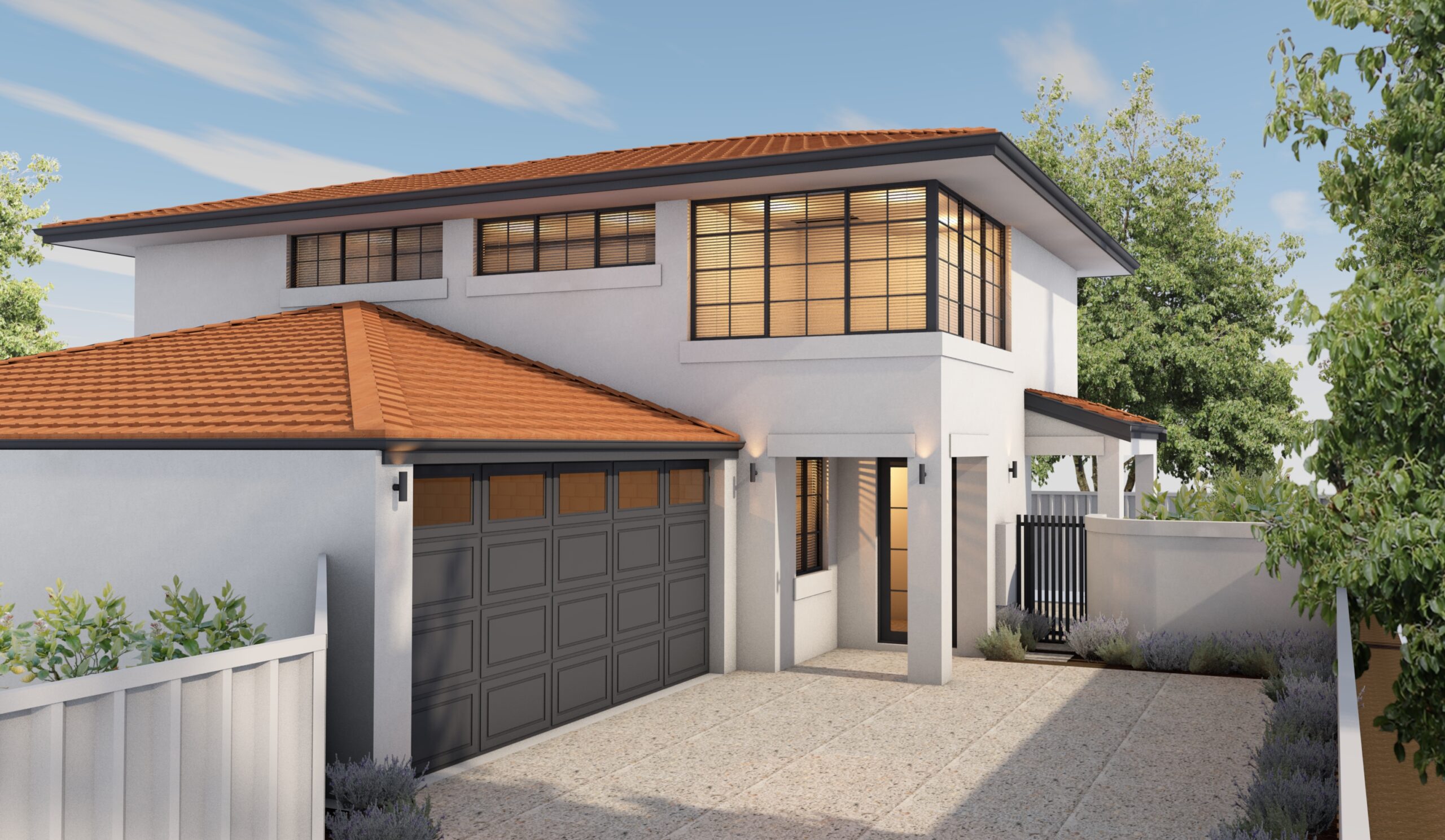
Duplex Development:
A single property divided into two separate residences. These residences can be side-by-side or front and back.
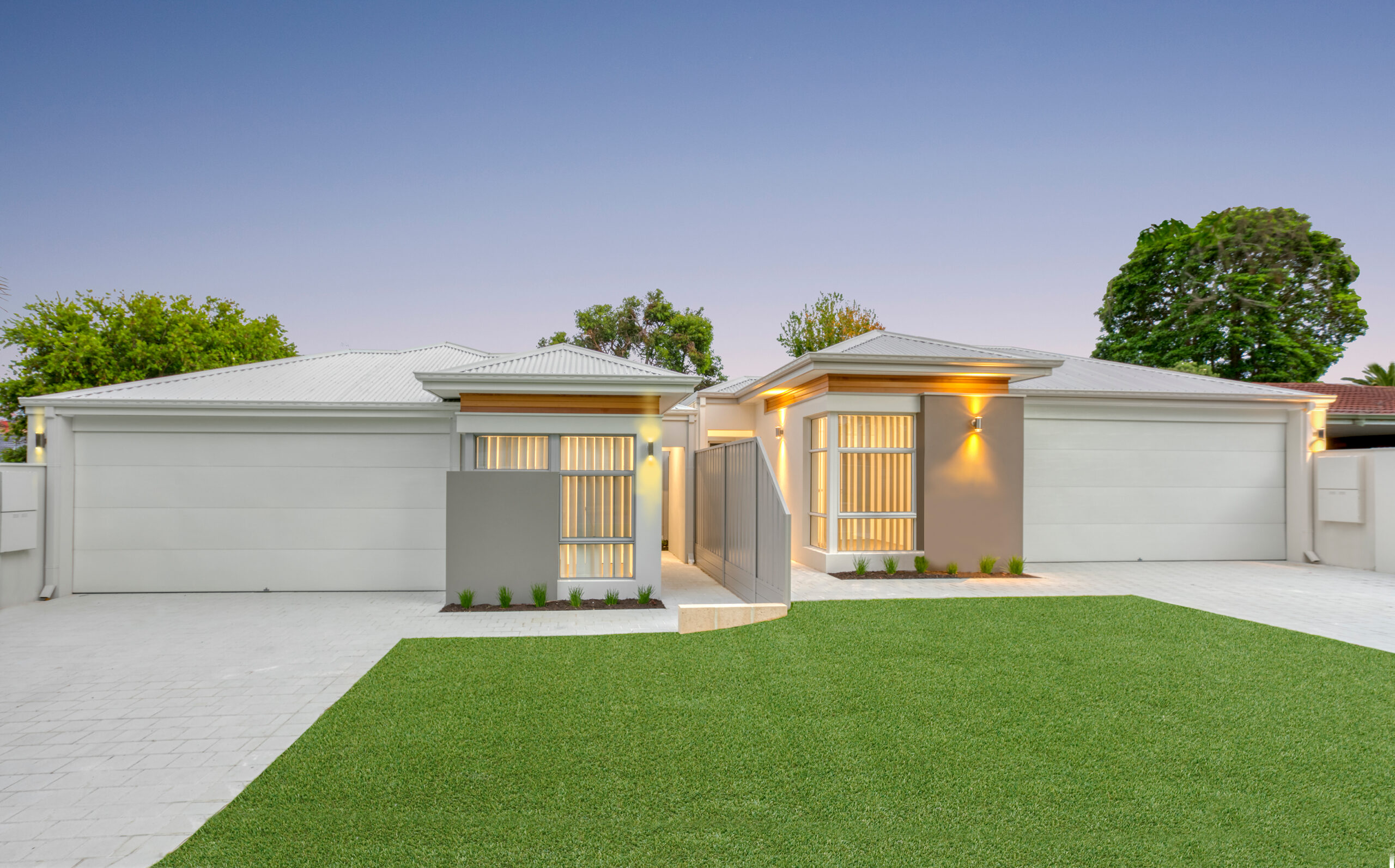
Triplex Development:
A single property subdivided into three individual residences. Each of these units has its own distinct entrance, similar to duplexes but with three separate units instead of two.
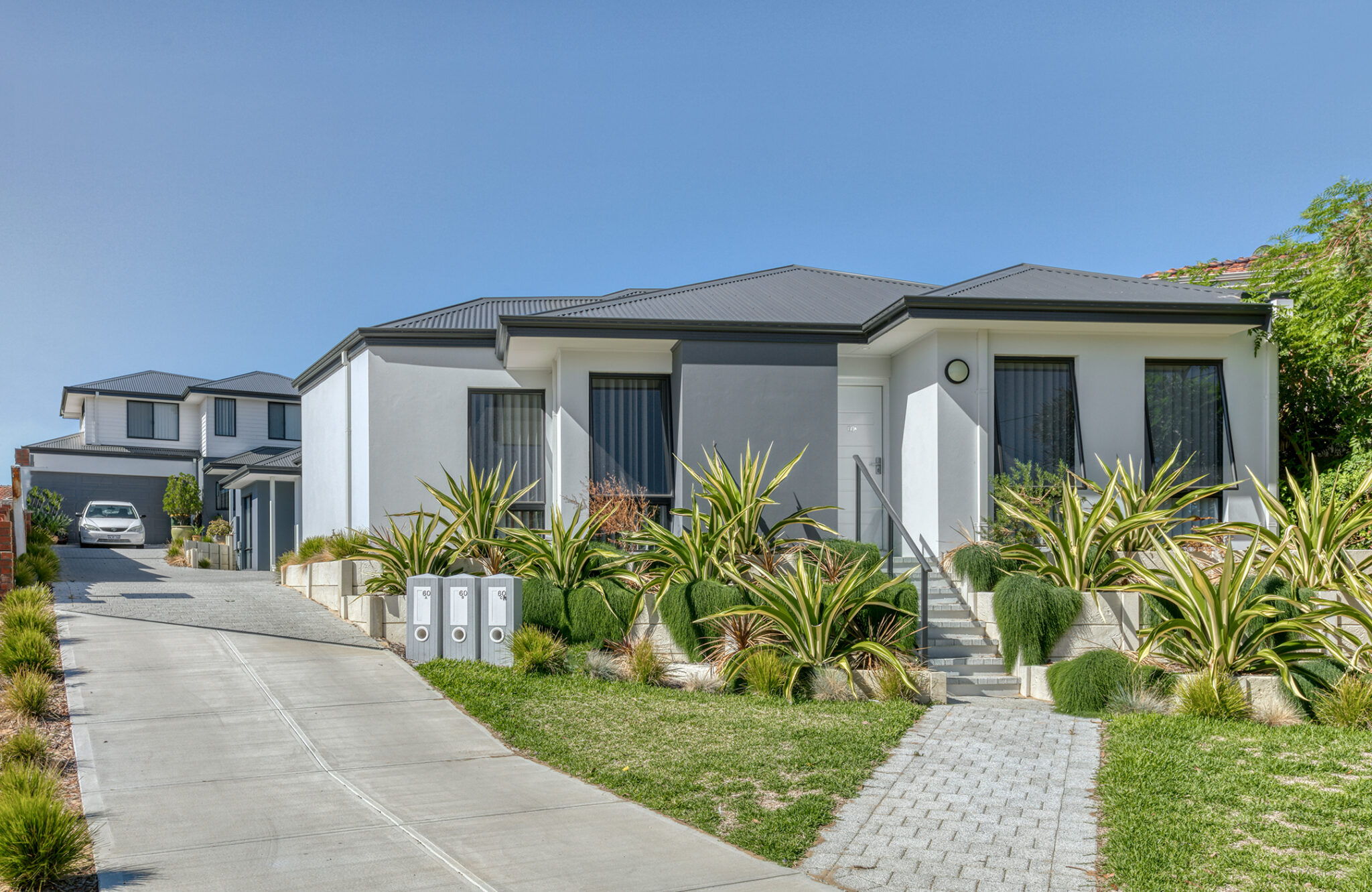
Narrow Lot Townhouses:
Townhouses designed specifically for narrower plots of land. They maximise space by being elongated and typically have multiple stories. Each townhouse is individually owned.
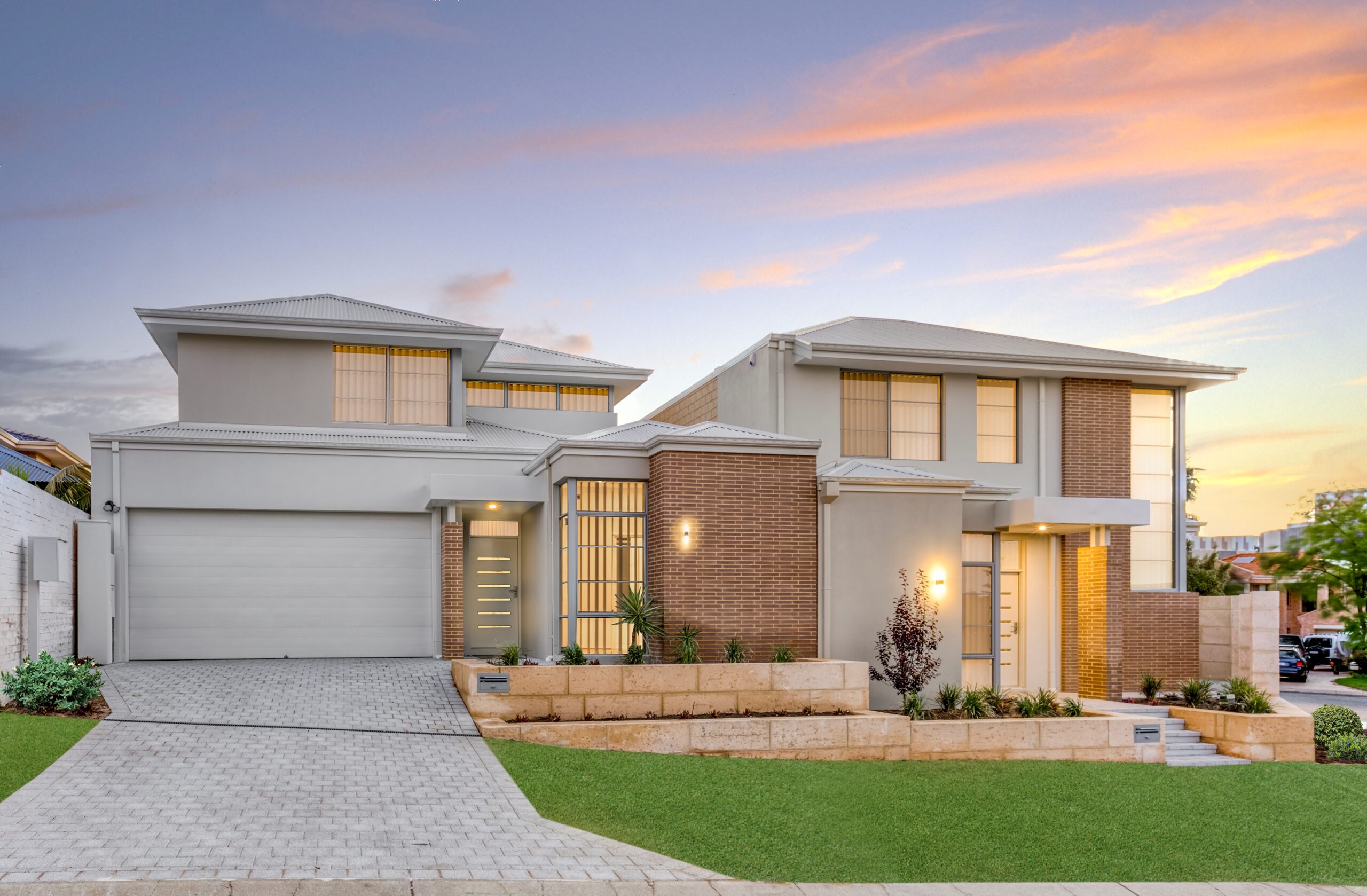
Narrow Lot & Townhouse Development
Multi Units and Apartments:
A building or complex that houses multiple separate residential units or apartments. Unlike townhouses, these units may share common hallways, elevators, and amenities. Each unit is individually owned or rented.
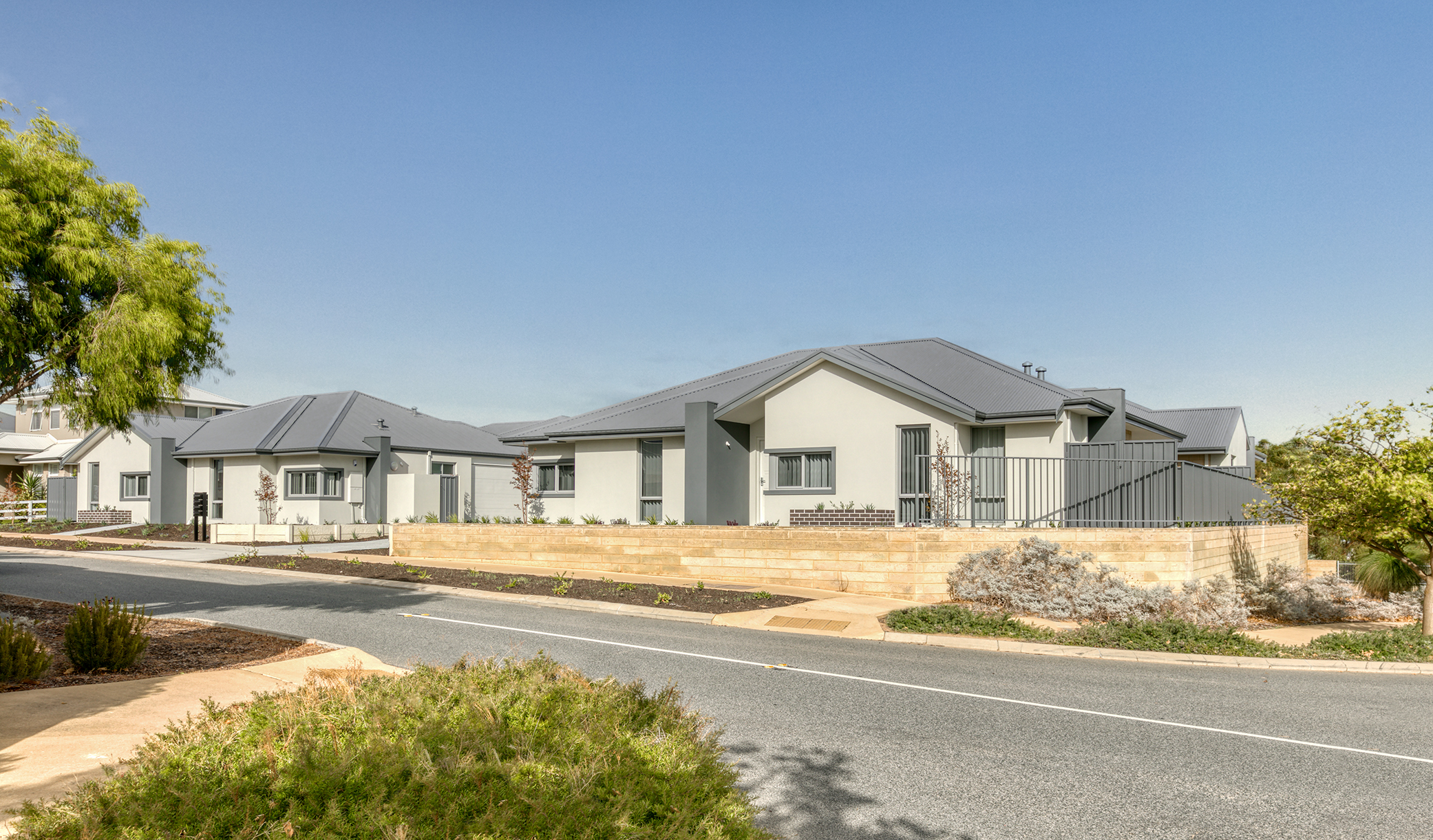
Grouped Housing:
Multiple dwellings constructed on a single block of land. These dwellings can be a mix of housing types, such as houses, townhouses, or units, and each can be sold separately.
How much will subdivision cost you?
A rough estimate of $32,000 to $100,000 seems accurate for most WA subdivisions. However, every project is unique.
Subdividing in WA comes with various costs based on multiple factors, including location, size, and project complexity. The costs will come down to application fees, infrastructure and utility costs and additional costs like assessments of your land. To get exact numbers it’s essential that you talk to professional land developers.
Subdivision Application Fees:
If you have a single lot and want to subdivide it into multiple lots, the application process of creating those new lots would be considered “amending” the lot boundaries existing scheme.
So, if they are subdividing their one lot into 4 separate survey-strata lots, they would be “amending for 4 survey-strata lots.”
As per the WA Government website, the current fee for subdivision application is roughly $7,500 (GST incl.) for up to 100 lots, plus $27 (GST incl.) per lot in excess of 100 lots.
Infrastructure & Utility Costs:
These can fluctuate widely. For instance, rural land subdivisions may require new power lines (through Western Power) and water mains (through Water Corporation), adding significantly to the expenses.
Additional Costs:
Apart from the obvious costs, you might also spend on:
- Engineering reports: Typically between $2,000 – $5,000.
- Environmental assessments: Typically between $3,000 – $10,000.
- Advertising your subdivision for sale: Anywhere between $1000 – $5000.
- Hiring a registered licensed surveyor.
Ready to start a Subdivision Project?
One of the best property development tips you can receive is to seek out experienced land developer to be your partner every step of the way. Summit Developments is lucky enough to have Perth’s most experienced developments team who will work with you to maximise your returns. To start your property development journey, call our developments team or head to our property development page to request your obligation free development consultation!
Further Resources
Want to do some more reading on your own? Below are some resources that will be useful if you are planning a subdivision in WA.
- Department of Planning, Lands and Heritage: This government department is responsible for approving all subdivision applications and certain types of strata, lease, licence, classes of lease or licence, agreement to sell and options to purchase applications on freehold land in Western Australia. They also provide local government guidelines for subdivisional development.
- Western Australian Planning Commission (WAPC): The WAPC is responsible for receiving, processing and centrally administering the applications for subdivision (land development), not by local councils.
- Local Government Guidelines for Subdivisional Development: These guidelines are for developers, planners, engineers, technical consultants and contractors involved in subdivisional design and construction.
- Subdivision forms, fees, guides and general information: This resource provides forms for lodging development applications and a table of fees.



